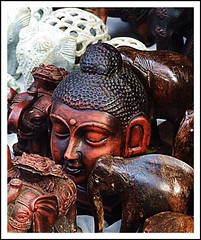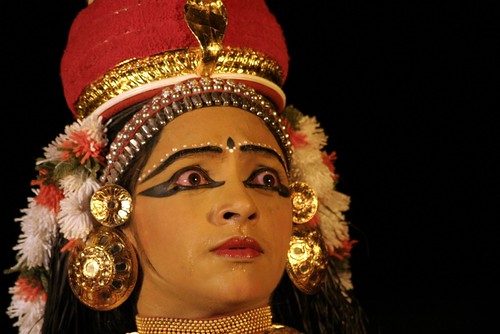Koodiyattam or Kutiyattam is a form of Sanskrit theatretraditionally performed in the state of Kerala, India. Performed in the Sanskrit language in Hindu temples, it is believed to be 2000 years old. It is officially recognised byUNESCO as a Masterpiece of the Oral and Intangible Heritage of Humanity.
Koodiyattam [kutiyattam], meaning "combined acting," signifies Sanskrit drama presented in the traditional style in temple theatres of Kerala and is the only surviving specimen of the ancient Sanskrit theatre. It has an attested history of a thousand years in Kerala, but its origin and evolution are shrouded in mystery. It seems that Kutiyattam is an amalgam of the classical Sanskrit theatre of ancient India and the regional theatre of Kerala. It is believed that Kulasekhara Varman Cheraman Perumal, an ancient king of Kerala, who ruled from Mahodayapuram (modern Kodungallur) reformed Koodiyattam, introducing the local language for Vidusaka and structuring presentation of the play to well defined units. He himself wrote two plays, Subhadraharana and Tapatisamvarana and made arrangements for their presentation on stage with the help of a Brahmin friend of him called Tolan. These plays are still presented on stage. Apart from these, the plays traditionally presented include Ascaryacudamani of Saktibhadra, Kalyanasaugandhika of Nilakantha, Bhagavadajjuka of Bodhayana, Nagananda of Harsa, and many plays ascribed to Bhasa including Abhiseka and Pratima. The Kutiyattam performance was confined to the temple precincts of Kerala in specially constructed theatres called Kutampalams.(Source Wikipedia)
Ms Kapila Nangiar and her group presented “Sita Parityagam” (Abondning of Sita) at IIT Delhi.Here are some of photos I want to share.
Subscribe to:
Post Comments (Atom)














0 comments:
Post a Comment